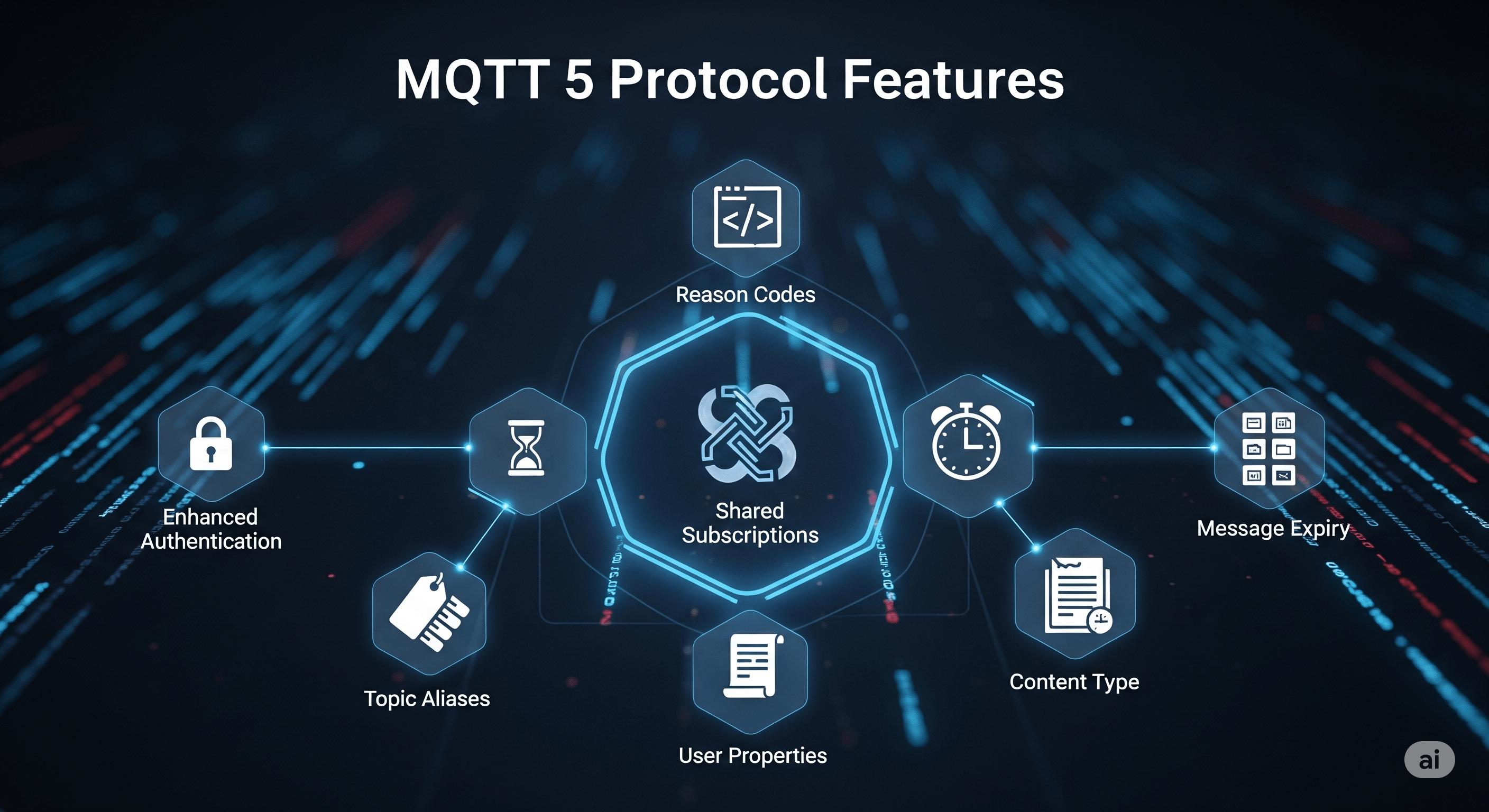Exploring MQTT 5 Features
May 6, 2024
MQTT version 5 represents a significant evolution from its predecessor, MQTT 3.1.1. While maintaining its core principles of being lightweight and efficient, MQTT 5 introduces several powerful features designed to address the complex requirements of modern, large-scale IoT deployments. These enhancements improve reliability, provide better feedback, and offer greater flexibility for developers.
Key Features and Improvements in MQTT 5
Below is a breakdown of some of the most impactful features introduced in MQTT 5.

1. Enhanced Session and Message Lifecycle Management
- Session Expiry Interval: In previous versions, sessions on the broker would persist indefinitely unless explicitly disconnected. MQTT 5 allows a client to specify a Session Expiry Interval upon connection. If the client does not reconnect within this interval, the broker cleans up the session, saving valuable resources.
- Message Expiry Interval: Individual messages can now be assigned an expiry interval. If a message cannot be delivered to its intended subscribers within this timeframe (e.g., because they are offline), the broker will discard it. This is crucial for applications where data is time-sensitive and old information is irrelevant or even harmful.
2. Improved Error Handling and Feedback
- Reason Codes: Almost every ACK packet (like CONNACK, PUBACK, SUBACK) now includes a Reason Code. Instead of a simple success/failure, the broker can now inform the client why an operation failed (e.g., "Topic Name invalid," "Quota exceeded," "Not authorized"). This makes debugging distributed systems significantly easier.
- Negative Acknowledgements (NACKs): The broker can now explicitly signal that a message with QoS 1 or 2 was not accepted, allowing the client to take immediate corrective action without waiting for a timeout.
3. Greater Flexibility and Metadata
- User Properties: Custom key-value pairs can now be added to almost any MQTT packet. This allows for application-specific metadata to be transmitted alongside the data, such as message sender ID, data source, or security tokens, without having to modify the message payload itself.
- Content Type and Payload Format Indicator: Clients can now specify the
Content-Type(e.g.,application/json) andPayload-Format-Indicator(e.g., UTF-8 string) of the message payload. This helps the receiving client correctly parse and handle the data without prior knowledge.
4. Advanced Subscription and Topic Management
- Shared Subscriptions: This is a game-changer for scalability. Multiple clients can subscribe to the same topic under a shared subscription group. The broker will then load-balance messages across the subscribing clients, ensuring that each message is processed by only one client in the group. This is ideal for horizontally scaling backend services that process high-volume data streams.
- Subscription Identifiers: A client can associate an identifier with a subscription. When the broker delivers a message for that subscription, it includes the identifier, allowing the client to efficiently route the message to the correct processing logic without needing to parse the topic string again.
- Topic Aliases: Clients can establish a short integer alias for a long topic string. For subsequent messages, the client can send the compact alias instead of the full topic string, reducing data usage and saving bandwidth, which is critical for constrained devices.
These features make MQTT 5 a more robust, scalable, and developer-friendly protocol, well-suited for the ever-growing demands of the Internet of Things.